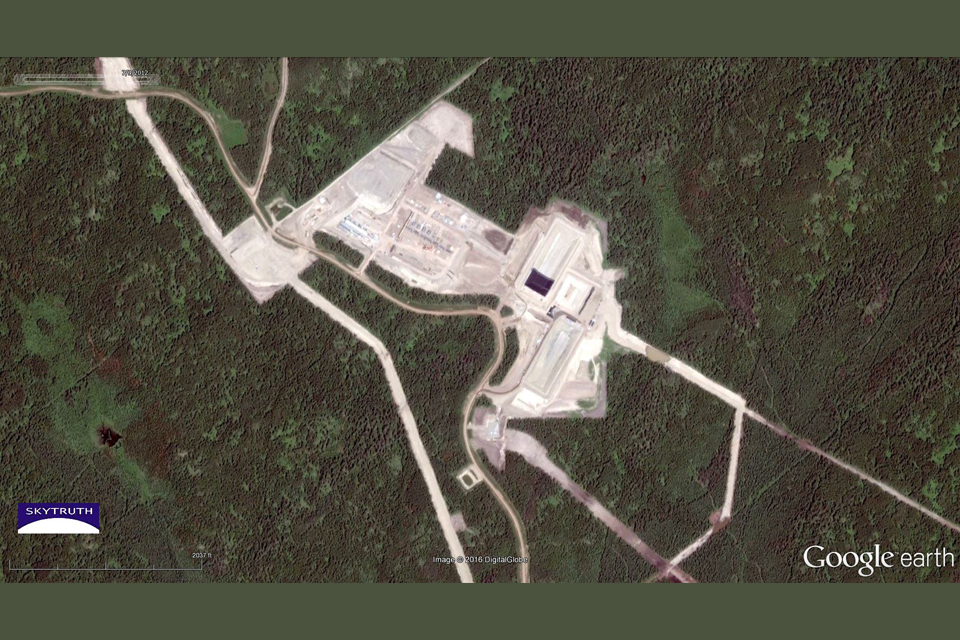The largest earthquake ever triggered by hydraulic fracturing in British Columbia followed industry’s use of large volumes of water and occurred during a fracking-triggered swarm of 676 earthquakes between 2014 and 2015, a new study has found.
The earthquake, triggered by the fracking activities of Malaysian-owned Progress Energy, registered 4.6 magnitude. It was about four kilometres underground and about 100 kilometres northwest of Fort St. John in the northern Montney formation. The earthquake could be felt nearly 180 kilometres away from the epicentre.
The study, published by the Bulletin of the Seismological Society of America this month, ruled out wastewater injection or pumping methane for underground storage as the cause of the earthquake.
“We found that occurrence of local events is better correlated with hydraulic fracturing operations,” it concluded. (Record-breaking seismic activity in other areas, like Oklahoma, has been triggered by mammoth wastewater injections and to a lesser degree, hydraulic fracturing. One damaging 5.8 magnitude quake in 2016 even changed water levels in an Oklahoma creek.)
The paper also identified the size of the fracks occurring in northeastern B.C. as a factor in triggering the 4.6 magnitude earthquake. A 5.0 magnitude quake can cause significant ground shaking and property damage.
In the area of B.C. where the earthquake occurred, wastewater wells typically inject about 3,000 cubic metres of salty water into the ground a month, while methane storage involves pumping up to 100,000 cubic metres a month into the ground.
The hydraulic fracturing well associated with the 4.6 earthquake injected more than 160,000 cubic metres (42.3 million US gallons) of water, chemicals and sand over a three-week period in 132 stages. Each stage creates fractures in rock.
“The sheer volume is important to look at,” said Alireza Mahani, the study’s lead author and consulting seismologist with the Induced Seismicity Monitoring Project, a collaboration between Geoscience BC, the Canadian Association of Petroleum Producers and the BC Oil & Gas Commission.
Seismic activity in northeastern B.C. followed fracking with much higher water volumes per well than the United States Geological Survey found were typically used south of the border.
Between 2000 and 2014, the volume of fracking fluid required for horizontal wells increased from about 177,000 gallons per oil and gas well to more than four million gallons per oil well and 5.1 million gallons per gas well, according to the U.S. agency.
The fracking that triggered the large B.C. earthquake used almost eight times more fluid than an average U.S. frack job, placing more pressure on the Earth’s highly fractured crust.
Fracking propels fluids down a wellbore at high pressure and blows them into shale rock to create cracks and channels through which the gas or oil can move to the well.
“There is an apparent match between increase in the number of hydraulic fracturing stages and increase in the number of seismic events,” the new study found.
Since 2008 industry has drilled and fracked more than 3,500 wells in the Montney area. Analysts expect that up to 150,000 wells could be drilled in the region to supply approximately 19 proposed liquefied natural gas (LNG) terminals. A global supply glut has put most of the projects in financial limbo.
Hydraulic fracturing has already had a significant impact on the region’s seismic patterns.
Since 2008, the number of magnitude 3.0 earthquakes has increased from 33 a year to 97 in 2015.
“We do see an increase that corresponds with oil and gas activities in the region,” said Mahani in an interview.
“The main concern is the possibility of an event that can generate ground motion that is large enough to damage the structures like the ones in central U.S. So far there has not been any report of damage as a result of these events but a large event close to the populated areas such as Fort St. John would be concerning.”
Presentations by the BC Oil and Gas Commission to earthquake scientists have identified public safety, property damage, well bore integrity (the shaking can cause wells to leak methane) and aquifer contamination as hazards from industry-triggered quakes.
According to Gail Atkinson, the NSERC/TransAlta/Nanometrics Industrial Research Chair in Hazards from Induced Seismicity at Ontario’s Western University, earthquakes triggered by hydraulic fracturing can exceed “what the natural hazard was in the first place” and pose risks to infrastructure such as dams only built to withstand natural earthquake hazards. As well, earthquakes induced by fracking tend to be shallow and can produce more damaging ground motion.
At a meeting of the Seismological Society of America this week, Atkinson will propose a two-pronged strategy to deal with the risk of industry-triggered ground shaking.
The expert suggests creating five-kilometre “exclusion zones” in fracking areas “to ensure the integrity of those few facilities whose failure consequences are unacceptable (such as major dams).”
In addition to specific exclusion zones around critical infrastructure, Atkinson proposes that regulators track the rate of seismic events of magnitude 2.0 or greater with real-time monitoring within 25 kilometres of fracking operations and use the information to reduce the risk of public hazard.
Earthquakes triggered by the oil and gas industry have raised many concerns for researchers.
Five years ago, geologist Jean-Philippe Avouac at the California Institute of Technology raised the primary concern in a major science publication: “We should remain cautious of human-induced stress perturbations… We know how to start earthquakes, but we are still far from being able to keep them under control.” ![]()
Read more: Energy, BC Politics

















Tyee Commenting Guidelines
Comments that violate guidelines risk being deleted, and violations may result in a temporary or permanent user ban. Maintain the spirit of good conversation to stay in the discussion.
*Please note The Tyee is not a forum for spreading misinformation about COVID-19, denying its existence or minimizing its risk to public health.
Do:
Do not: